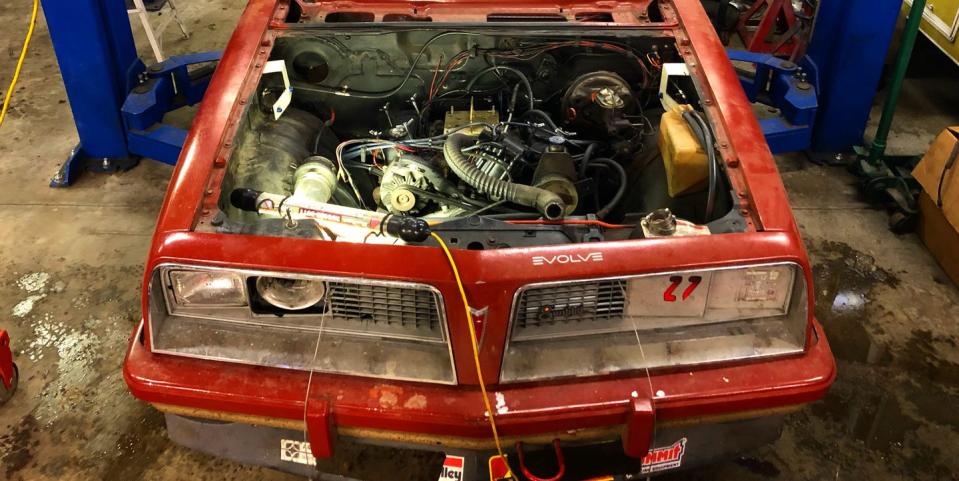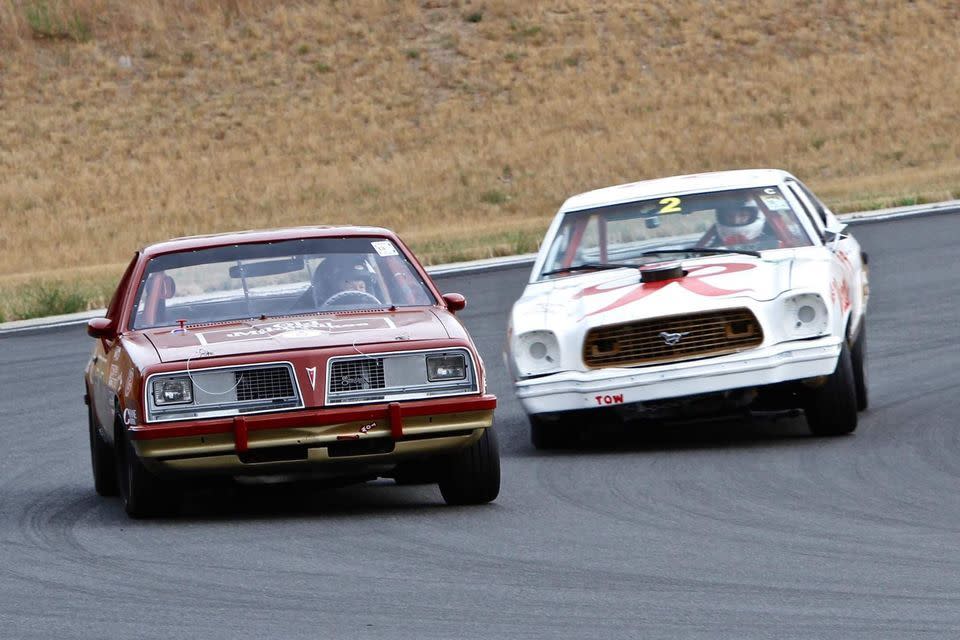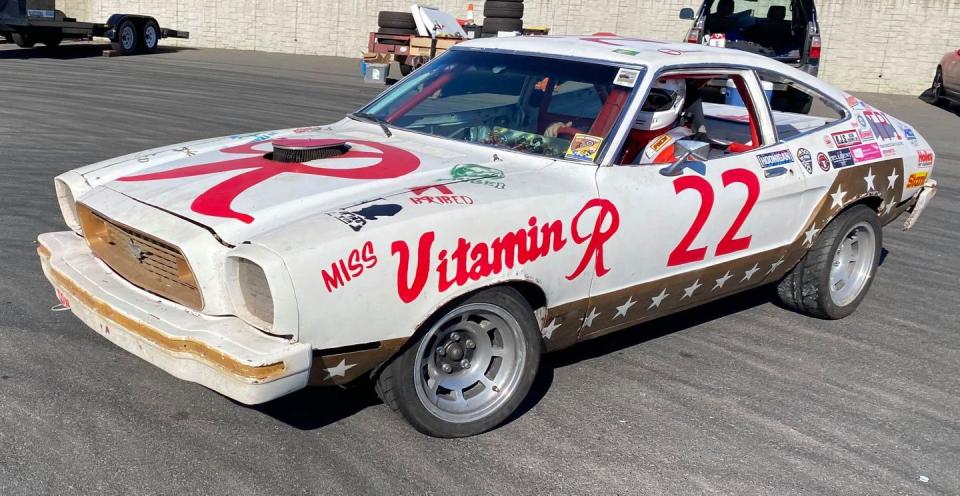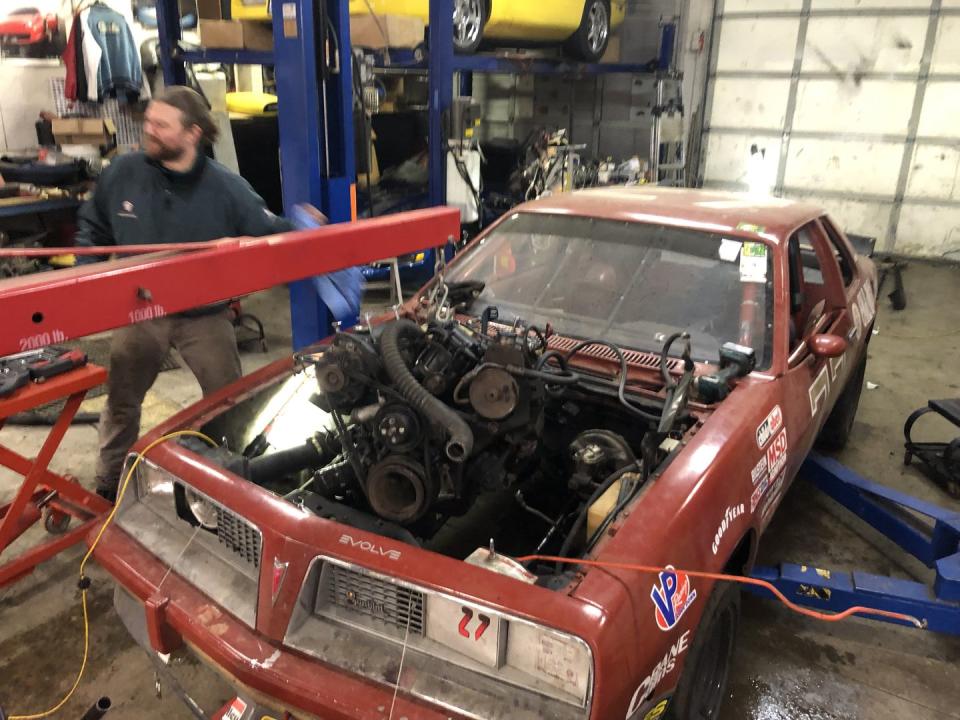The Horrible Disease Called Shitbox Endurance Racing

During one of the most heartbreaking moments in 21st-century cinema, Jake Gyllenhaal's Jack Twist mutters a line to his soulmate: "I wish I knew how to quit you." Gyllenhaal delivers the line with his back turned, but we can hear Jack's pain.
Nowadays, the line has been reduced to a meme. Because of course it has. (Gyllenhaal's Brokeback Mountain co-star Heath Ledger would've hated that, for the record). But the sentiment remains, recognizable to anyone who's loved something or someone long enough for it to bring them pain. Whether it's a doomed Wyoming love story, or one of the million other things that enthrall and enslave us, we all recognize the sentiment. It feels personal.
And I'm not trying meme here; but for me, one of those things has always been shitbox racing. I'm hopelessly attached to endurance racing in irredeemable hunks of metal, and I wish I knew how to quit it.
Welcome to Kinardi Line, mouthpiece of the free world’s most self-loathing auto writer. Home to questionable takes, reviews, and shitbox worship.

Early on there were no drawbacks. I found 24 Hours of Lemons racing in my early twenties, after a move to the big city, while gainfully employed at Microsoft. A track car sat in the single parking spot behind my rented condo and there was no wedding ring on my finger (no regrets there, but single men can chase ruin with rare impunity). Somebody at an autocross told me that if I wrote a check for a few hundred bucks, I could go wheel-to-wheel endurance racing.
And back in the early 2010s, that meant running in the Lemons or Chump Car series, which actually ran for 24 straight hours over the course of a weekend. On a chart of seat time per dollar, this racing couldn't be beat. I was hooked after the first race, and found few extracurriculars matched the exhaustion of keeping a race car in racing shape for 24 hours. Or the triumph of it.
I earned a reputation as a fast and reliable driver in local crapcan circles (cue the laughter here), which meant that calls for participation just kept rolling in. I obliged every invitation. I watched a piston blow a fist-sized hole in the engine block of a Ford Probe, raced six straight hours at night in a Karmann Ghia, and made three-wheels-off passes in a Mustang II. In those days, everyone seemed to adhere to the spirit — and more importantly the $500 all-in budget — of this brand of racing. The cars were almost uniformly slow and junky. The racing was close, fierce and raw. Often it was punctuated by hilarity (you ever have to dodge a lengthy sex toy on a race track?). But through it all, there was camaraderie. Most every race ended in mechanical disaster, chased down with laughter and cheap whiskey right out of the bottle.
But then life changed.

After maybe four or five years running Lemons and Chump, I got a job writing for Road & Track magazine in Ann Arbor, Michigan. Predictably, I took a pay cut (goodbye, M$FT) to get into publishing, and my girlfriend (now wife) quit her job to chase my dream. Then we got a cat. We got married. A thousand other strands of adulthood tied me down. I devoted more and more time to my career, which ironically allowed less leeway for racing of any flavor.
Still I'd always shake out the couch cushions and fly out once or twice a year to add another Lemons tech sticker to my race helmet, lining them up in a neat row that stretched from one side to the other.
In time I grew ashamed to show up at R&T tests and pull my helmet out of its bag. My colleagues often sport a general's salad bar of real amateur racing tech stickers on their helmets (cue that laughter again), from AER, NASA, SVRA, or the like. I've rubbed shoulders with F1 racers and Indy 500 champs who no doubt looked over my helmet with suspicion. That neat little row of stickers became testament to my pitiful choice in professional development.
Still, I'd stuck with shitbox racing because my budget never seemed to line up an honest-t0-goodness racing effort. I had my fill of autocross as a college student. Karts are fun, but don't stroke the same pleasure centers as cars that lean and move underneath.
Then at some point, even shitbox racing burnt me out.
The cost to run cars in a competitive way has skyrocketed over the years, and beat-to-hell race cars have a half life measured in minutes. My group of buddies, who run largely Malaise-era American junk, have held the cars together mostly with Permatex and some dreams. This made for some predictably unreliable metal.
A couple times, I flew back to Seattle for a race, only for the entire fleet of cars to shit the bed in hours. Sure, we buried the pain with BBQ and cold beer, but I flew back home something like $1500 poorer (travel included), without hardly any seat time to show for it. After one race a few years back, I silently swore the whole thing off.
And it wasn't just me. The whole group suffered through long nights of wrenching and that wallet drain so specific to racing at any level. Just about everybody involved felt burnt out by the effort. My buddy who owns the cars earned his share of grey hairs. Like Sisyphus, he carried the team on his back for a decade by organizing the team from stem to stern.
At our last race, he told the team he'd have to step down as de facto ringleader, leaving an uncertain void where all his effort and care had been. For all of his suffering, I'm extremely grateful (most of his Lemons stories begin with, "My wife nearly killed me for this one, but..."). I thought that might be the death knell for our humble shitbox racing effort, but this stuff feels more like a disease than recreation. The itch sticks with you.
I moved back to Seattle about a year ago, called back to family and fresh mountain air. With the move, an opportunity to reconnect with my racing teammates, to drum up new ideas for the 2022 racing season, and contribute more of my time and money to the cause. We marked the 2022 calendar in shades of optimism, the burns of fresh failure salved by time.
We pulled the tired old lump of iron out of the Low Road Racing Pontiac Sunbird, one of the three race cars in dire need of total rebuild. In that old engine's place goes the thumping heart of a $1000 Pontiac Solstice. I hope to write more about the Ecotec swap, which should solve for power, weight and reliability in one master stroke (pay attention curious Miata owners, and anyone else looking for cheap reliable power). Stay tuned if that butters your biscuit.

That simple act of pulling the engine with a couple good friends seemed to reset my attitude. In that hole where the old broken engine sat, I saw hope. We'll probably labor like hell to wedge the Ecotec into the Sunbird. Even if it runs well, we'll drag the thing out to that first race of the year and something else will blow to high hell, spilling our dreams all over the front straight at Pacific Raceways or wherever. I'll likely get little seat time, again, and swear the whole damned operation off. Again. If history's any indication, I'll just get back on the horse, ready for some fresh punishment.
What's the alternative? With my budget, certainly not real racing.
And besides, I'm not sure it's even about the seat time anymore. I've made peace with the row of lesser stickers on my racing helmet. If and when I'm able to make that leap to some NASA spec series, I'll do it happily.
For now, I have the broken, beautiful world of shitbox racing. Sure it's not respectable, but it's cheap-ish and I promise you won't meet better people in any other race series. I guess some things just draw you in to their orbit and their gravity won't let you free. Maybe it's best not to fight it. I can not quit you, shitbox racing. And I hope I never will.
You Might Also Like

 Yahoo Autos
Yahoo Autos 